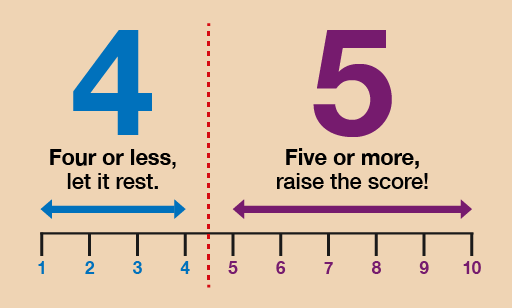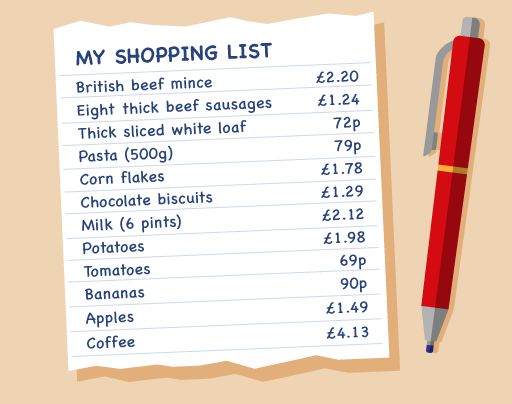2 Rounding
If you are out on a shopping trip, being able to quickly estimate the total cost of your shopping could help you to decide whether you have enough money to pay for it. Approximating answers to calculations is a very useful skill to have.
Remember the rounding rhyme that will help you:
Watch this video to refresh your knowledge on rounding. You should make notes throughout:
Now try the following activities. Remember to check your answers once you have completed the questions.
Activity 5: Rounding to 10, 100 and 1,000
- Round these numbers to the nearest 10:
- a.64
- b.69
- c.65
Check with our suggestions before continuing.
Answer
You can see that:
- a.64 rounded to the nearest 10 is 60.
- b.69 rounded to the nearest 10 is 70.
- c.65 rounded to the nearest 10 is 70. (Remember: when a number is exactly halfway, you always round up. As the rhyme goes, ‘Five or more, raise the score!’)
Now practise rounding to the nearest 100. The rule is exactly the same.
- Round these numbers to the nearest 100:
- a.325
- b.350
- c.365
Check with our suggestions before continuing.
- Round these numbers to the nearest 1,000:
- a.4,250
- b.4,650
- c.4,500
- d.4,060
Hint: In this activity you should round to the nearest pound, so £4.67 would be rounded to £5.
Activity 6: Bill’s shopping
Bill has £20 to spend on his shopping. Here’s a list of the items he selects, along with how much they cost:
Use your rounding skills to work out whether Bill has enough money to pay for all of his shopping.
Answer
Rounding all of the items should give you a total of £19 – so yes, Bill probably has enough money to pay for all of his shopping.
- Can you total all of the items on the shopping list to see what the actual cost of Bill’s shopping is?
Answer
The total cost of all of the items on the shopping list comes to £19.33, which is very close to the answer you achieved through rounding.
Well done! You have now successfully rounded and carried out some basic number work. Can you see the importance of rounding? This is especially important when sticking to a budget.





